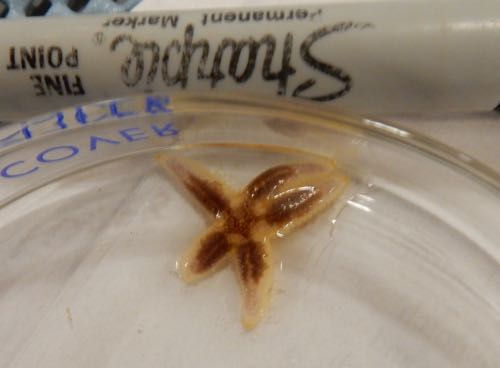Benthic organisms live along the bottom of the seafloor. They include producers and consumers, ranging from worms to sea stars to microbes. The ROV helps scientists on the expedition see benthic organisms in their environment (and can be used for sampling as well), and the box corer allows scientists to bring up a container of sediment which may be analyzed for organisms and physical content. We are all looking forward to the first science station to utilize all of the cool scientific instruments that have been brought on the expedition. Here are a couple of photos from organisms recovered from the first test run of the box corer a few days ago.
 A tiny sea star found in sediments from the box corer.
A tiny sea star found in sediments from the box corer.
 Benthic organisms collected from a test run of the box corer.
Benthic organisms collected from a test run of the box corer.
Question and Answer
Question: Why did I include a "Sharpie" in the photo of the sea star?
Answer from last Q: It is approximately 941 miles (as the crow flies) from Kodiak to Barrow.


Comments